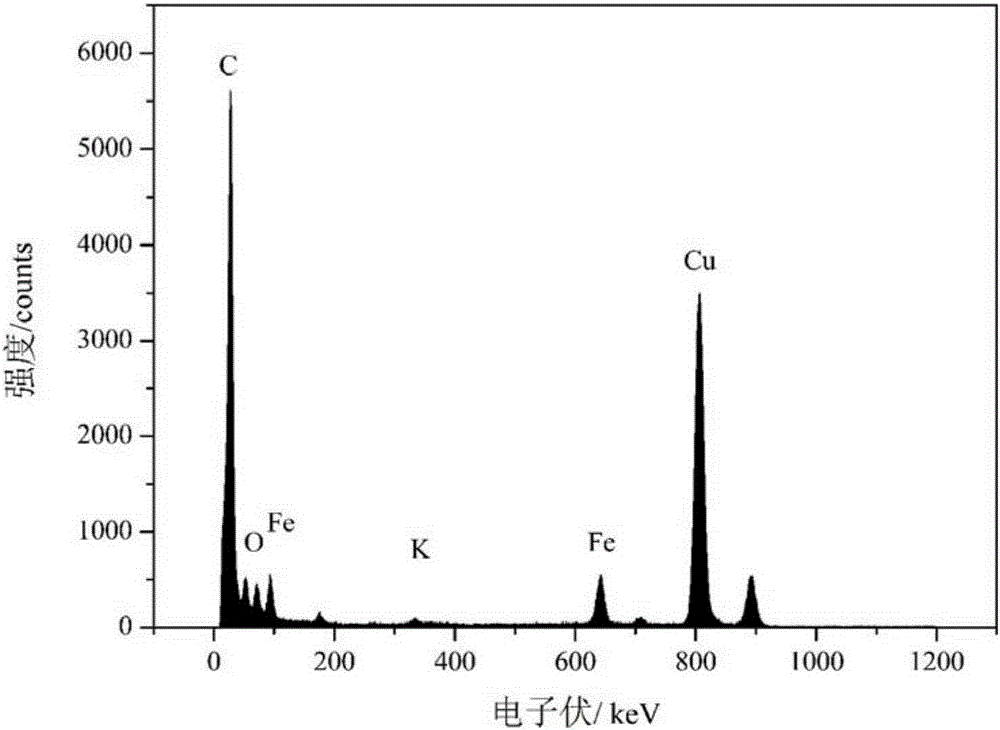antigpc3-pb NPs for photothermal therapy and MRI of liver cancer and its preparation and application
A technology for photothermal therapy and liver cancer, which is applied in MRI/MRI contrast agents, medical preparations without active ingredients, and medical preparations containing active ingredients, etc., to achieve good target recognition function and good MRI imaging. Imaging function, the effect of excellent photothermal killing function
- Summary
- Abstract
- Description
- Claims
- Application Information
AI Technical Summary
Problems solved by technology
Method used
Image
Examples
Embodiment 1
[0038] Accurately weigh 5.4mg of FeCl 3 ·6H 2 O drug, add 20.0mL deionized water to dissolve in a clean three-necked flask to obtain a concentration of 1.0mM FeCl 3 Solution, then add 0.5mmol (ie 98.0mg) of anhydrous citric acid, stir mechanically, and heat to 60°C. Accurately weigh 8.4mg of K 4 [Fe(CN) 6 ]·3H 2 O drug, add 20.0mL of deionized water into a clean beaker with a capacity of 50.0mL and dissolve to obtain a concentration of 1.0mM K 4 [Fe(CN) 6 ] aqueous solution, and then add 0.5mmol (ie 98.0mg) of anhydrous citric acid, stir mechanically, and heat to 60°C.
Embodiment 2
[0040] The prepared 1.0mMK containing 0.5mmol citric acid 4 [Fe(CN) 6 ] aqueous solution at 60°C was slowly added dropwise to the prepared 1.0mM FeCl containing 0.5mmol citric acid 3 In the aqueous solution, with continuous mechanical stirring, it can be found that a clear and bright blue color appears in the mixed solution, indicating that Prussian blue nanoparticles are generated, and the pH of the mixed system is now ~ 2.8. Continue to stir for 30 minutes, cool to room temperature, centrifuge at 30,000 rpm for 15 minutes to collect the precipitate, disperse and wash with deionized water, and repeat this process three times. Finally, the precipitate was collected and vacuum-dried overnight at 50°C to obtain a blue-black dry solid, which was weighed and quantified, and stored in a dry place at room temperature. The surface of the Prussian blue nanoparticles synthesized in this step is modified with citric acid as a protective agent, and citric acid can pass through the carb...
Embodiment 3
[0042] Take 4.0 mL of citric acid-modified Prussian blue nanoparticle solution with a concentration of 250 ppm dissolved in PBS buffer solution, and adjust the pH to 5.0 with dilute HCl with a concentration of 0.2N. Accurately weigh 4.0 mg of EDC and 8.0 mg of Sulfo-NHS and add to the above solution successively, and activate at room temperature for 1-2 hours under mechanical vibration.
PUM
| Property | Measurement | Unit |
|---|---|---|
| particle diameter | aaaaa | aaaaa |
| particle diameter | aaaaa | aaaaa |
| particle diameter | aaaaa | aaaaa |
Abstract
Description
Claims
Application Information
 Login to View More
Login to View More - Generate Ideas
- Intellectual Property
- Life Sciences
- Materials
- Tech Scout
- Unparalleled Data Quality
- Higher Quality Content
- 60% Fewer Hallucinations
Browse by: Latest US Patents, China's latest patents, Technical Efficacy Thesaurus, Application Domain, Technology Topic, Popular Technical Reports.
© 2025 PatSnap. All rights reserved.Legal|Privacy policy|Modern Slavery Act Transparency Statement|Sitemap|About US| Contact US: help@patsnap.com



